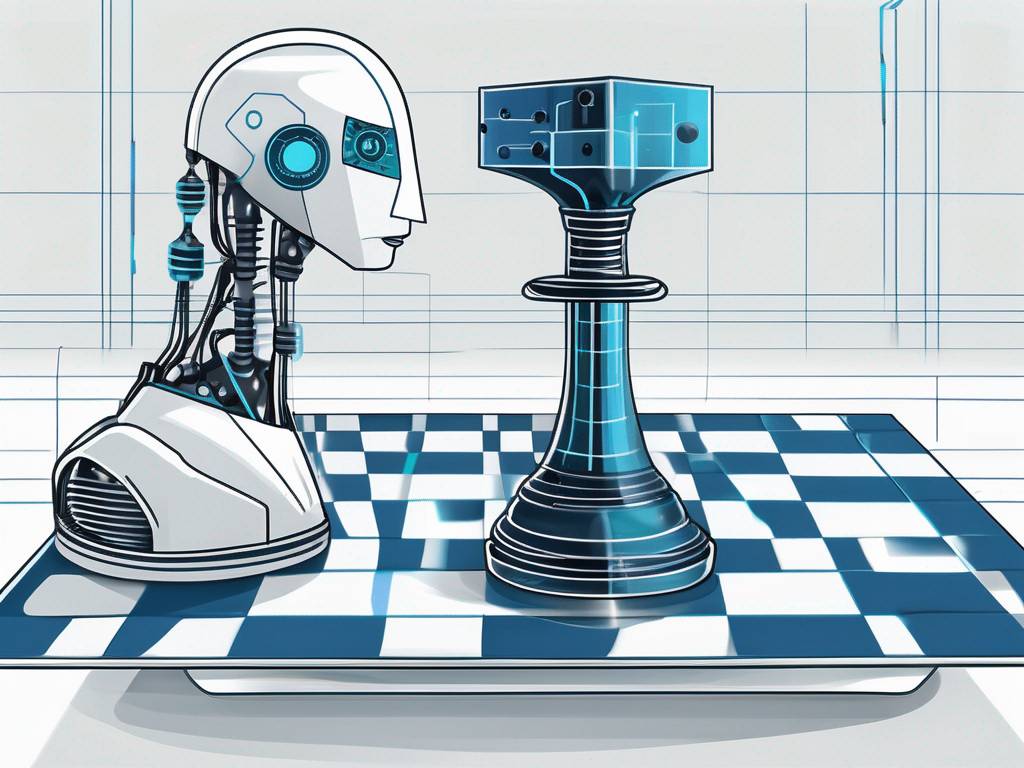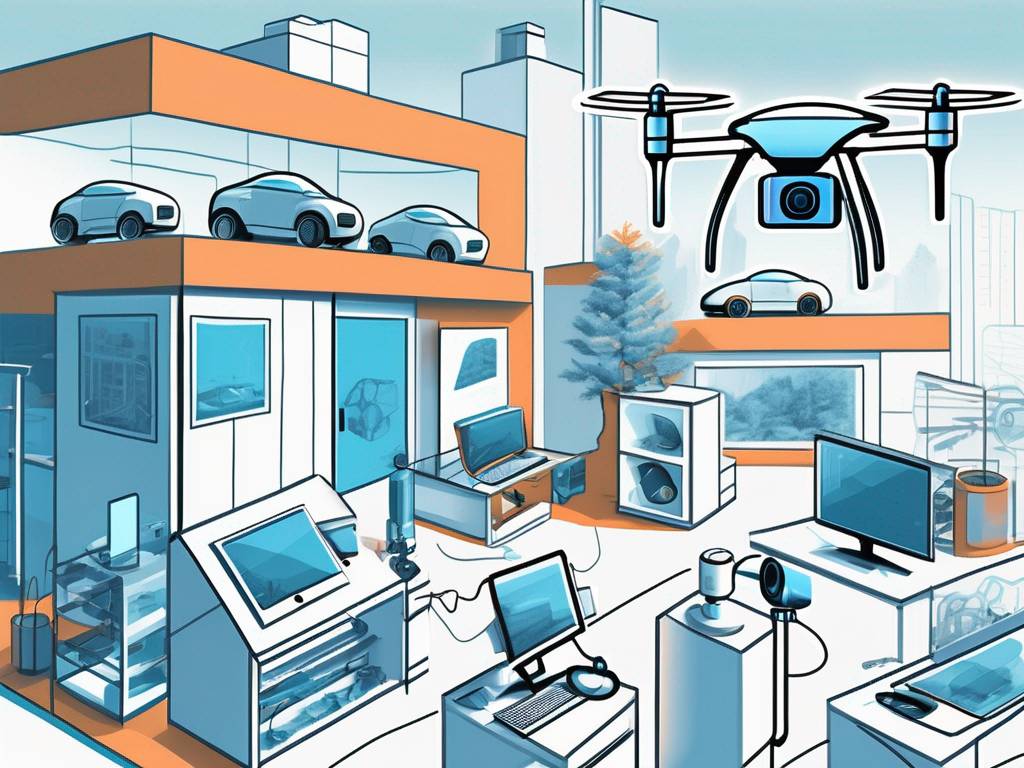AGI vs. AI: Understanding the Difference
Key Insights
- Artificial Intelligence (AI) refers to computer systems that can perform tasks that typically require human intelligence
- Artificial General Intelligence (AGI) is aimed at creating machines with human-like intelligence, with the potential to perform any intellectual task that a human can
- AGI is envisioned to exceed the capabilities of AI by encompassing a broader range of functionalities, learning abilities, and adaptability
- Understanding the distinctions between AGI and AI is crucial for C-level executives in any industry to make informed decisions regarding the adoption of these technologies
Defining Artificial Intelligence (AI)
Artificial Intelligence (AI) is a field within computer science aimed at creating intelligent machines capable of performing tasks that typically require human intelligence. These AI systems are equipped with techniques like natural language processing (NLP), machine learning, and computer vision. These capabilities allow them to analyze, interpret, and learn from data. Consequently, AI systems can make decisions, handle complex tasks, and emulate human cognitive functions.
AI has seamlessly integrated into our daily lives in various forms, such as virtual assistants like Siri and Alexa, self-driving cars, and sophisticated medical diagnostic tools. In the creative realm, generative AI tools like ChatGPT and Midjourney are being used to create art and other media content, demonstrating AI’s potential to mimic generalized human cognitive abilities. However, today’s AI systems are still considered ‘weak AI’, particularly in comparison to the potential of future advancements.
The Evolution of AI
The concept of AI dates back to the 1950s when researchers began exploring the possibility of creating machines that could exhibit human-like intelligence. The initial focus was on developing rule-based systems that followed predefined instructions. However, as computing power increased and new algorithms were developed, AI systems became more sophisticated.
One significant milestone in the evolution of AI was the development of machine learning algorithms. Instead of being explicitly programmed, these algorithms enable systems to learn and improve from experience. This breakthrough opened up new possibilities for AI, allowing machines to process vast amounts of data and make predictions or decisions based on patterns and trends.
In recent years, deep learning has emerged as a powerful subfield of machine intelligence. Deep learning models, inspired by the structure and function of the human brain, use artificial neural networks to process and analyze complex data. This approach has led to remarkable advancements in areas such as image recognition, NLP, and speech synthesis.
Key Concepts in AI
To better understand AI, it is essential to grasp some key concepts. Machine learning, for instance, is a subfield of AI that focuses on enabling systems to learn and improve from experience without being explicitly programmed. It involves training models on large datasets and using statistical techniques to make predictions or take actions.
Natural language processing aims to facilitate communication between humans and machines by allowing systems to understand and generate human language. This involves tasks such as speech recognition, language translation, and sentiment analysis. NLP has seen significant advancements in recent years, with chatbots and virtual assistants becoming more capable of understanding and responding to human queries.
Computer vision involves enabling machines to interpret and understand visual data like images and videos. This field has seen tremendous progress and AI-powered systems are now capable of accurately identifying objects, recognizing faces, and even understanding complex scenes. Computer vision has applications in various domains, including autonomous vehicles, surveillance systems, and medical imaging.
Applications of AI
AI has found applications in various industries, revolutionizing fields such as healthcare, finance, manufacturing, and transportation. In healthcare, AI-powered systems aid in diagnosing diseases, analyzing medical images, and developing personalized treatment plans. For example, AI algorithms can analyze medical images such as X-rays and MRIs to detect abnormalities and assist radiologists in making accurate diagnoses.
In the financial sector, AI plays a crucial role in facilitating fraud detection, algorithmic trading, and risk assessment. Machine learning algorithms can analyze vast amounts of financial data to identify patterns indicative of fraudulent activities. Additionally, AI-powered trading systems can make split-second decisions based on market conditions and historical data, optimizing investment strategies.
AI applications in manufacturing optimize production processes, enhance quality control, and enable predictive maintenance. By analyzing IoT sensor data from machines, AI algorithms can detect anomalies and predict potential failures, allowing for proactive maintenance. This reduces downtime and improves overall efficiency in manufacturing operations.
Transportation is another domain where AI is making significant advancements. Self-driving cars, powered by AI algorithms, have the potential to revolutionize the way we commute. These vehicles use sensors, cameras, and advanced algorithms to perceive the environment, make decisions, and navigate safely. AI also plays a crucial role in optimizing traffic flow, reducing congestion, and improving transportation systems’ overall efficiency.
These are just a few examples of how AI is transforming industries and impacting our daily lives. As technology continues to advance, the possibilities for AI applications are virtually limitless.
Understanding Artificial General Intelligence (AGI)
Current AI research is dedicated to creating machines that can execute particular tasks with with human-like intelligence. In contrast, Artificial General Intelligence (AGI), also known as strong AI, artificial super intelligence, or general AI, adopts a more comprehensive approach. AGI aims to develop machines that possess human-level intelligence, enabling them to perform any intellectual task a human can. Unlike conventional AI that is task-specific, AGI represents an ambitious objective to attain general intelligence applicable across a multitude of domains and tasks.
The Concept of AGI
AGI is often depicted in science fiction and remains a theoretical concept. AGI represents the idea of developing machines that not only understand and learn from data but are also adept at applying this knowledge in various scenarios. The main objective is to develop machines with advanced capabilities in reasoning, problem-solving, and emotional comprehension, capable of managing both novel and difficult tasks with creativity. Artificial General Intelligence aims to replicate the full spectrum of human intellect, encompassing cognitive skills, emotional intelligence, and social interaction.
AGI vs. Narrow AI
A key distinction between AGI and Narrow AI lies in their scope and capabilities. Narrow AI systems are tailored to perform specific tasks, whereas AGI aspires to a broader range of functions and adaptability. Although Narrow AI excels in its respective areas, it does not possess the comprehensive cognition and adaptability that AGI aims to achieve. AGI is theorized to go beyond specific domains and be capable of applying background knowledge and skills across a variety of tasks and environments, reaching human-level performance.
The Potential of AGI
The advent of AGI could bring major changes to our world, impacting areas like science, healthcare, and economics. In the field of education, AGI could revolutionize learning methods, tailoring education to individual needs and accelerating knowledge acquisition. AGI could also lead to significant new discoveries in science and bring about major advancements in personalized medicine. Additionally, AGI could influence culture and the arts, inspiring new ways of artistic expression.
The Distinct Differences Between AGI & AI
Although AGI and AI share the common goal of creating intelligent machines, there are distinct differences between them.
Capability & Functionality
AI is specialized in specific tasks or domains, excelling within its designated functions. In contrast, AGI is conceptualized to have broader functionality, encompassing understanding, learning, and applying intelligence in a way akin to human cognition. This renders AGI more versatile and comprehensive compared to specialized AI.
Learning & Adaptability
AI utilizes data-driven learning techniques to enhance its performance in specific tasks. Current AI systems require extensive retraining or restructuring to adapt to new tasks or domains. However, there is hope that AGI will not only incorporate these data-driven learning capabilities but also excel in learning from minimal training data and operate with reduced human input. AGI systems are envisioned to have the potential to adapt, innovate, and generalize knowledge across various domains, surpassing the limitations of specialized AI algorithms.
Scope & Limitations
AI is focused on developing systems that excel in tasks within specific domains, emulating human intelligence within defined parameters. In contrast, AGI is conceptualized to surpass these domain-specific limitations, aiming to demonstrate human-level intelligence across a wide array of tasks and environments. AI has made considerable progress in certain areas, but AGI remains an aspirational and theoretical goal of achieving human-like intelligence in machines.
The Future of AGI & AI
The future of AGI and AI presents vast potential, while also bringing to light significant considerations for society.
Predictions & Possibilities
AI experts and AI researchers offer varied forecasts about the future of AGI and AI. Many picture a world where AGI systems coexist with humans, enhancing human abilities and aiding in societal advancement. Some express concerns about the possible dangers of AGI, highlighting the need for cautious development and ethical guidelines. Whatever the path may be, AGI and AI are anticipated to become more pivotal in shaping our future, revolutionizing industries, and expanding the limits of human accomplishments.
Ethical Considerations
As AI continues to advance, the urgency of ethical considerations grows. It’s essential to address and prioritize matters of privacy, transparency, accountability, and bias. Finding a balance between technological innovation and ethical responsibility is crucial for the ethical adoption of AGI and AI in society. By actively tackling these ethical issues, we can build trust and foster sustainable development in the realm of AI.
Impact on Society & Economy
The future integration of AGI will undoubtedly have significant socio-economic implications. While these technologies hold the potential for substantial societal benefits, such as increased productivity, enhanced healthcare, and greater efficiency, they also raise concerns related to job displacement and inequality. It is imperative for industry leaders to consider the implications and collaborate with policymakers, academia, and other stakeholders to shape a future that benefits both businesses and society at large.
Questions?
-
What is Artificial Intelligence (AI)?Toggle questionArtificial Intelligence (AI) is a field of computer science that focuses on creating systems capable of performing tasks that typically require human intelligence. These tasks include learning, reasoning, problem-solving, and language understanding.
-
What is Artificial General Intelligence (AGI)?Toggle questionAGI, or Artificial General Intelligence, represents a level of technological advancement beyond the current scope of AI. It is conceptualized as a machine's ability to understand, learn, and apply intelligence across a wide range of tasks, mirroring the cognitive abilities of a human being. In theory, AGI can perform any intellectual task that a human can, demonstrating flexibility and adaptability in learning and problem-solving.
-
How does an AGI system differ from traditional AI systems?Toggle questionTraditional AI systems are specialized and limited to the tasks they are programmed to perform. These systems excel in their designated areas but lack the ability to transcend beyond their predefined functions. On the other hand, AGI is envisioned to have the capability to perform any intellectual task that a human can. It would be able to learn, adapt, and apply its intelligence autonomously across a wide range of challenges and scenarios, not restricted to a specific set of programmed tasks.
-
Are there any existing AGI systems?Toggle questionAs of now, there are no fully functional AGI systems. Most AI technologies are still in the narrow AI stage, specializing in specific tasks. AGI remains a theoretical concept and an ongoing area of research.
-
How close are we to achieving AGI?Toggle questionThe timeline for achieving AGI is still uncertain. Some experts believe it could be decades away, while others think it might never be fully realized.
-
What are the ethical concerns surrounding AGI?Toggle questionAGI, though a future concept, presents significant ethical challenges. These include potential job displacement, privacy concerns due to its vast data processing capabilities, the possibility of its use in military contexts, and the overarching issue of machines potentially surpassing human abilities in many domains. These issues underscore the necessity for careful deliberation and regulation in the development of AGI.

 hello@westlink.com
hello@westlink.com  (866) 954-6533
(866) 954-6533  700 N Colorado Blvd,
700 N Colorado Blvd,







Comments